Delhi is a fascinating city that draws on its rich cultural mix, which reflects its historical importance and current buzz. Delhi, as India’s capital, functions as its political hub; at the same time, it is a significant center of commerce and entertainment.
Over the years, Delhi has amazed the visitors with its colorful attractions. From the iconic architectural landmarks like the Red Fort and India Gate to the busy streets of Chhawri Bazar and modern shopping complexes of Saket and Connaught Place the city has the old-world charm and contemporary swag.
Delhi is also full of spiritual sites, including the Lotus Temple, Jama Masjid, as well as Akshardham Temple, all of which show Delhi’s cultural inclusiveness. Visiting Delhi is to dive into a spectrum of experiences that include history, culture, and modernity, all seamlessly blended together to create an incredible journey into the soul of India.
- India Gate
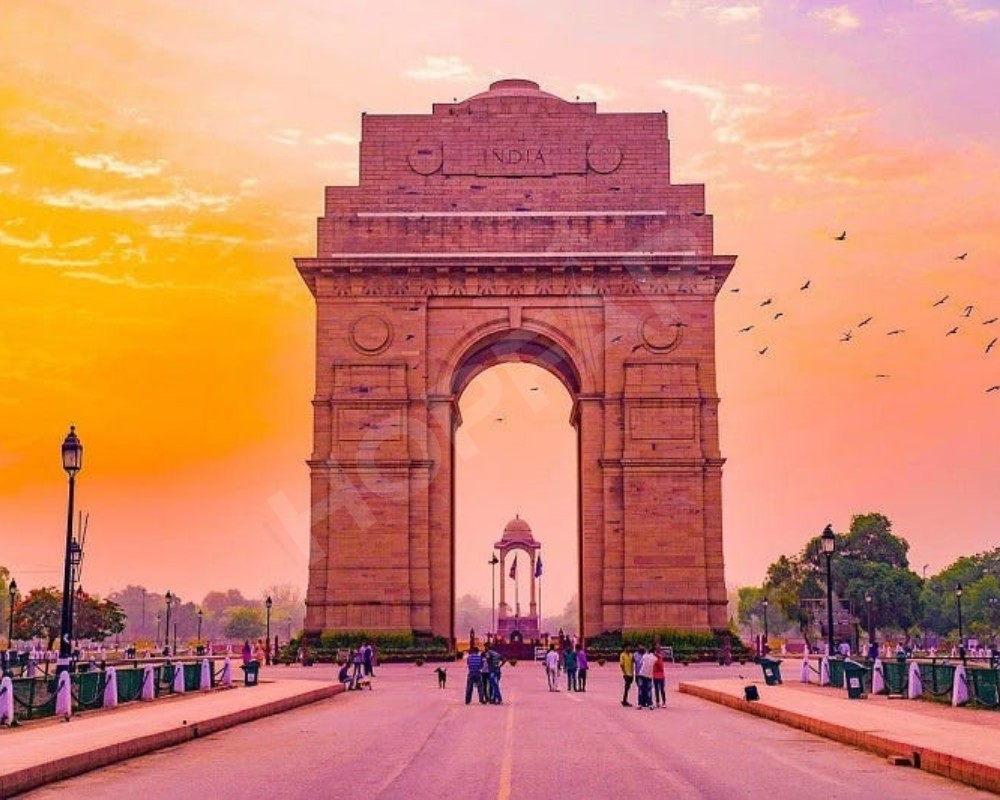
India Gate, which is also commonly referred to as the All India War Memorial, is prominently located in New Delhi on Rajpath. Built by Sir Edwin Lutyens, this 42-meter-tall monument pays tribute of 82,000 Indian and British soldiers who sacrificed their lives in the First World War and the Third Anglo-Afghan War. The shape of India Gate is similar to the Arch de Triomphe, the Gateway of India and the Arch of Constantine, which are known landmarks. Like these famous landmarks, India Gate stands as a symbol of sacrifice and valor. It is the venue of the Republic Day Parade which occurs every year, with people gathered to observe the occasion. Named after 13,300 service personnel, and illuminated by Amar Jawan Jyoti, India Gate is a dual symbol of remembrance and a well-liked attraction which brings visitors near and far.
- Qutub Minar

Qutub Minar is like a big tower in Delhi Complex, which is UNESCO’S heritage site. It boasts of a massive height of 72.5 meters (238 feet), which is the second tallest thing in Delhi. The first ruler of the Delhi Sultanate, Qutb Ud-Din-Aibak, started to construct it in 1192 after defeating the last Hindu ruler of Delhi. He initiated it with the base, and then his son-in-law, Iltutmish, erected three other levels. Firoz Shah Tughlag concluded the top two floors later on. Therefore, it is a tower that many people built over a period of years.
- Humayun’s Tomb
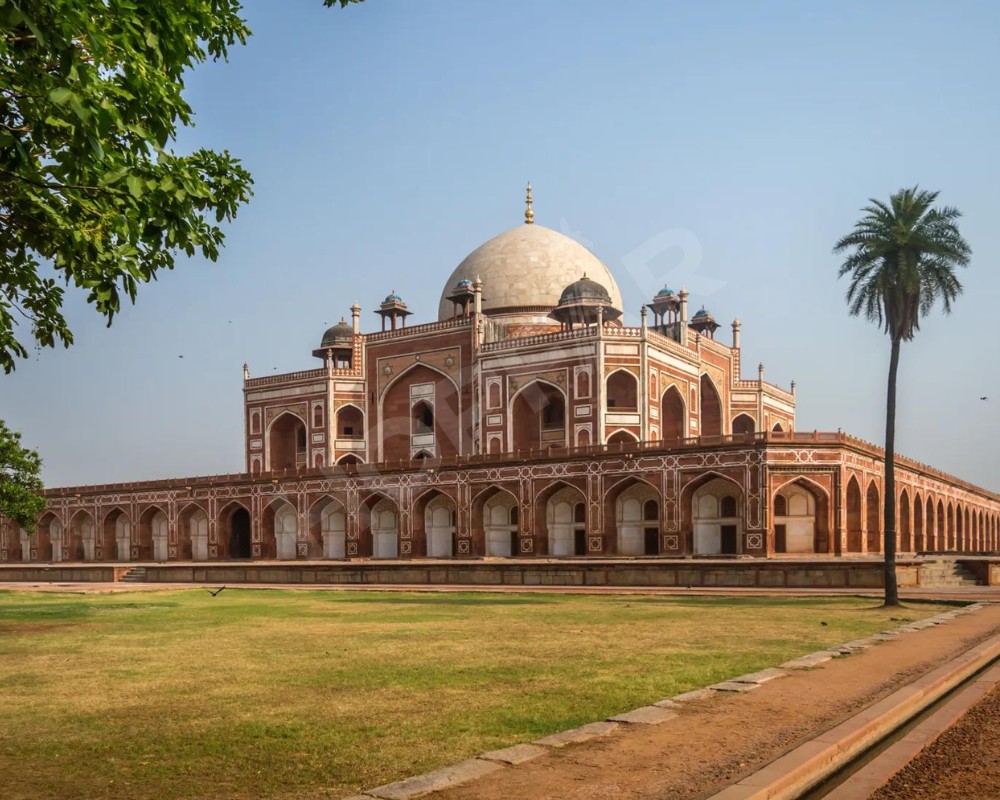
The tomb of Humayun, at Nizamuddin East in Delhi, is the burial ground of Mughal Emperor Humayun. Constructed in the year 1569-70 by the Empress Bega Begum, it resides as the first garden-tomb in the Indian subcontinent. The striking use of red sandstone, scarcely encountered in that period, and its fusion of Mughal and Persian architecture, artistically executed by Persian architect Mirak Mirza Ghiyath, earned it the UNESCO recognition in 1993.
Bathed by a Mughal Garden and by the Yamuna River, the tomb’s grandeur is enhanced, especially during winter. It also holds the remains of other Mughals including Humayun’s family and the descendants of the Emperor Shah Jahan, thus providing to its historical importance.
- Akshardham Temple
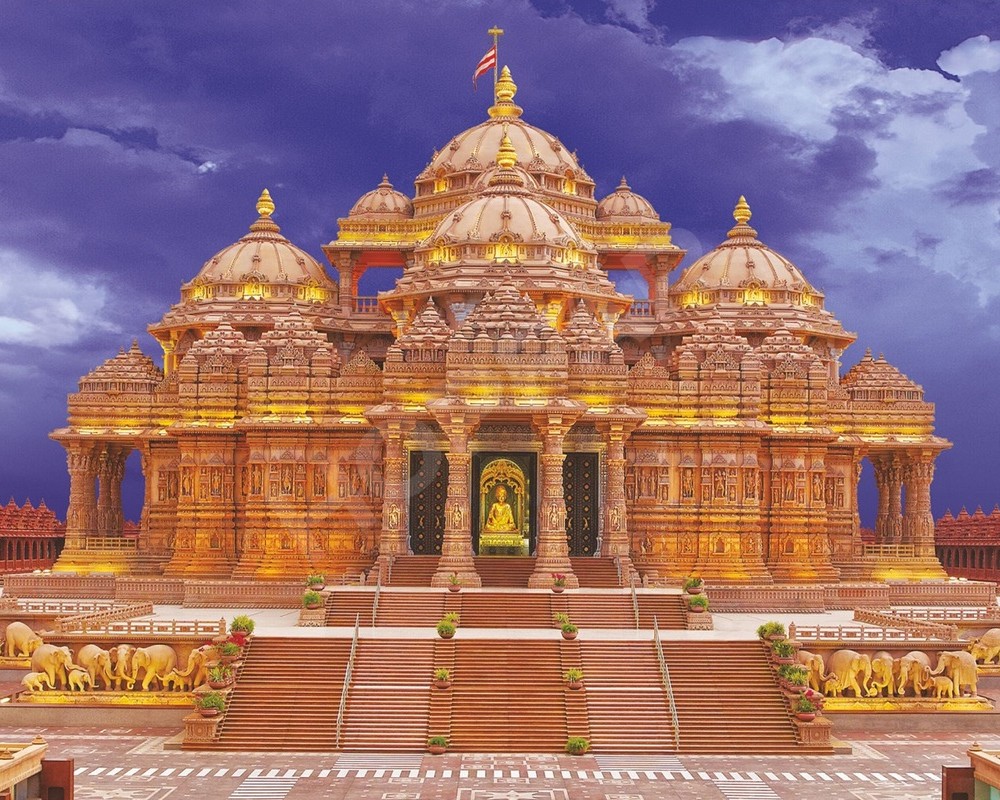
Akshardham Temple is a symbol of the Indian heritage, spirituality, and architecture. The Akshardham of Delhi City, which is also known as Swaminarayan Akshardham and is dedicated to Lord Swaminarayan, is the World’s Largest Comprehensive Hindu Temple as per the Guinness Book of World Records.
The temple’s architecture is really unique, as it has eight elaborately carved mandapams, and the walls decorated with timeless teachings of Hinduism and devotional practices. The core of it is by the divine presence of Lord Swaminarayan’s Murti with representations of 20,000 deities, renowned personalities of Indian history, and revered sages, all reflecting the wealth of Indian architecture and spirituality.
The Akshardham complex consists of India’s largest step well, enthralling water shows, enormous gardens like Narayan Sarovar, and sacral ceremonies for visitors to experience. It is a serene retreat for spiritual aspirants and a festival of India’s cultural brilliance.
- Lotus Temple
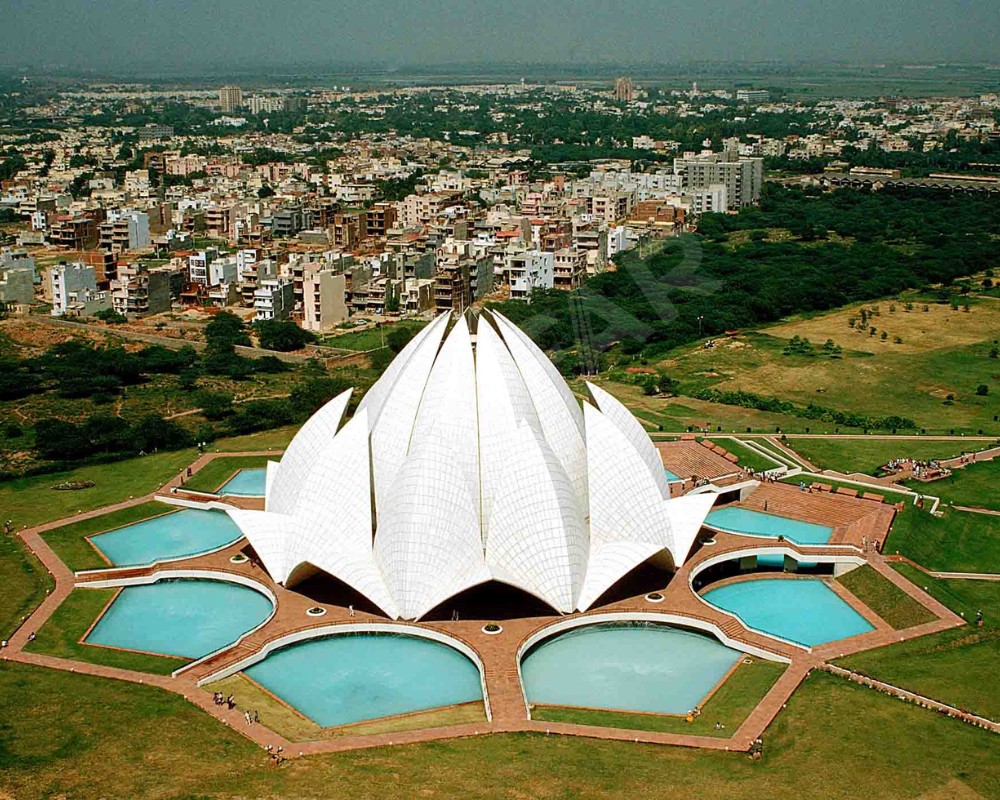
Situated in New Delhi, the Lotus Temple stands soaring as it embodies the fundamental concepts of the Baha’i faith. With the shape of an attractive lotus flower, it attracts people from over the world. This sanctuary, designed by Fariborz Sahba and completed in 1986, was the symbol of unity and acceptance, being hospitable to people of different backgrounds.
Feeling the serenity of temple’s grounds, guests are welcomed by lush gardens and peaceful pools. The winding lanes end at the temple gates, bringing tranquility in the midst of a busy market. The exquisite architecture of the interior creates an aura of quiet and peaceful contemplation that encourages people either to sit in quiet meditation or join in the recitation of sacred texts. The Lotus Temple goes beyond boundaries and becomes a haven of peace and spiritual comfort for everyone who enters.
Apart from its aesthetic value, the Lotus Temple serves as a sanctuary for meditation and self-reflection, thus becoming a coveted area in the urban landscape of Delhi.
- Red Fort
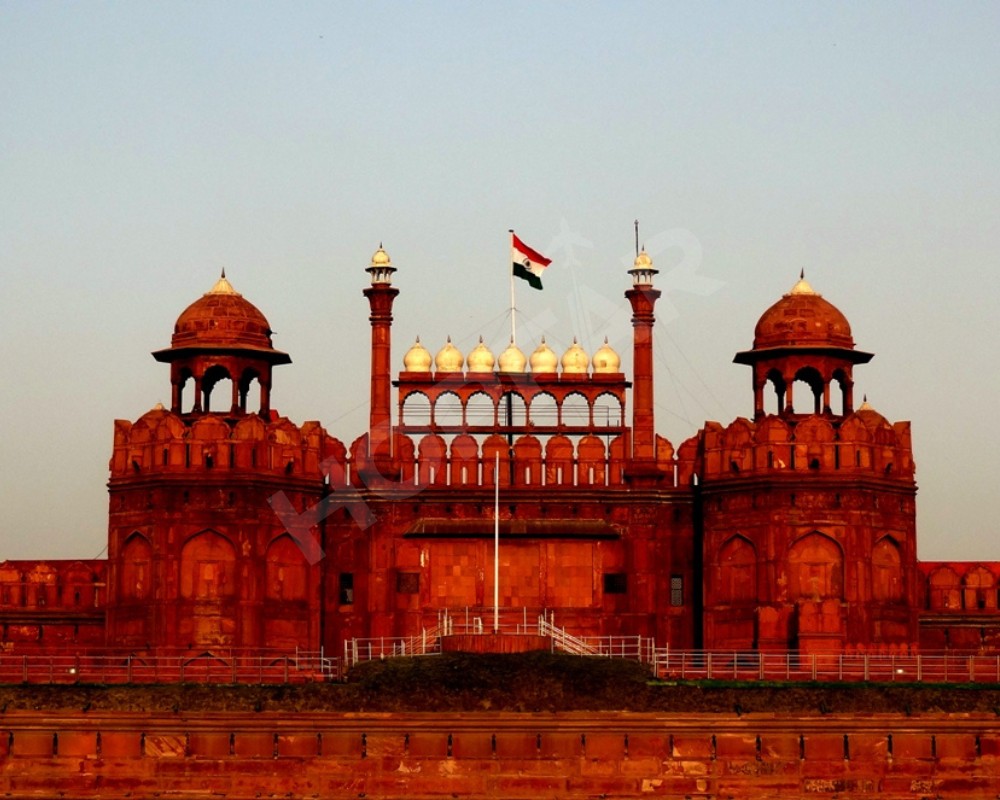
The Red Fort located in old Delhi was constructed by Shah Jahan in 1639 when he shifted the capital from Agra to Delhi. It was their place of residence and the place where they held significant occasions. The walls of the fort are built from red sandstone of great strength. Today, it’s a tourist spot with museum and on Independence Day it hosts the Prime Minister’s flag ceremony.
Previously known as the Blessed Fort or the Quila-e-Mubarak, the Red Fort stands by the River Yamuna in the Old City. It is renowned for its Mughal architecture and listed as a UNESCO World Heritage Site in 2007. The preservation and security of the monument are taken care of by the Archaeological Survey of India.
- Garden of Five Senses
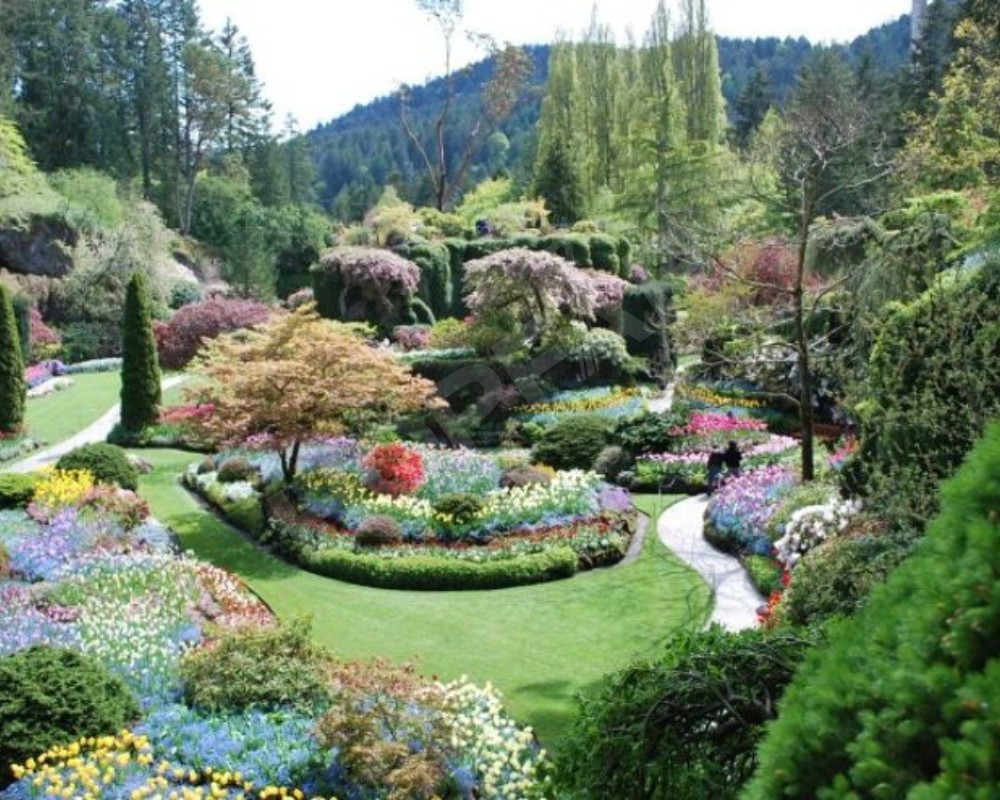
Amidst the Said-ul-Ajaib, the Garden of Five Senses spreads over 20 acres providing a tranquil respite from the city’s hustle. Intended for the awakening of touch, sight, smell, sound, and taste, it’s a sanctuary of nature’s admirers. With thematic parks, Mughal gardens, water lily pools, cascading waterfalls, and a solar park, it’s a serene retreat. It came out to be a vision of Architect Pradeep Sachdeva, a joint effort of Delhi Tourism and Transportation Development Corporation, which cost 10.5 crores. It has been hosting the February flower show that people love for more than 15 years, and it draws the attention of the visitors with its simplicity and beauty.
- Lodhi Garden
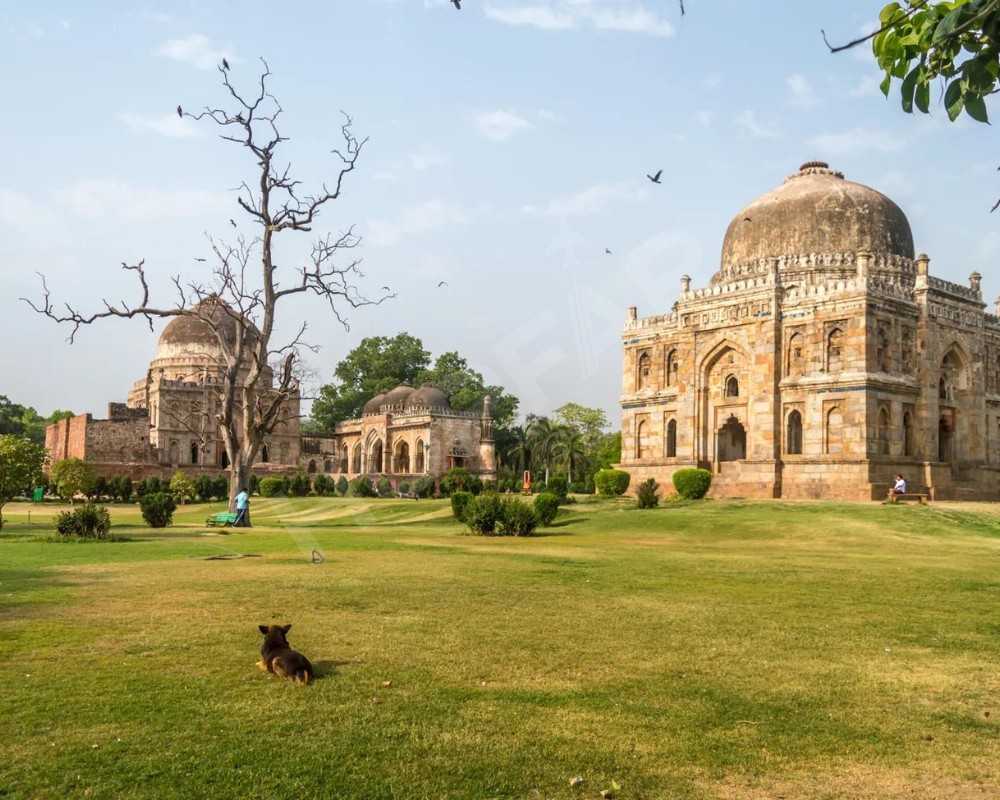
Lodhi Garden, neighboring Safdarjung Tomb and Khan Market in Delhi, is a lovely park with the tombs of Sayyid ruler Mohammed Shah and Lodhi king Sikandar Lodhi. Dating back to the Lodhi dynasty, it also has the Shisha Gumbad and Bara Gumbad. A combination of Sayyidi and Lodhi styles portray in the garden the rich heritage of Delhi. Run by the Archaeological Survey of India,
it had been earlier known as the ‘Lady Willingdon Park’ prior to India’s independence. The quiet ambiance in a lively setting appeals people for relaxation and recreation.
- Dilli Haat
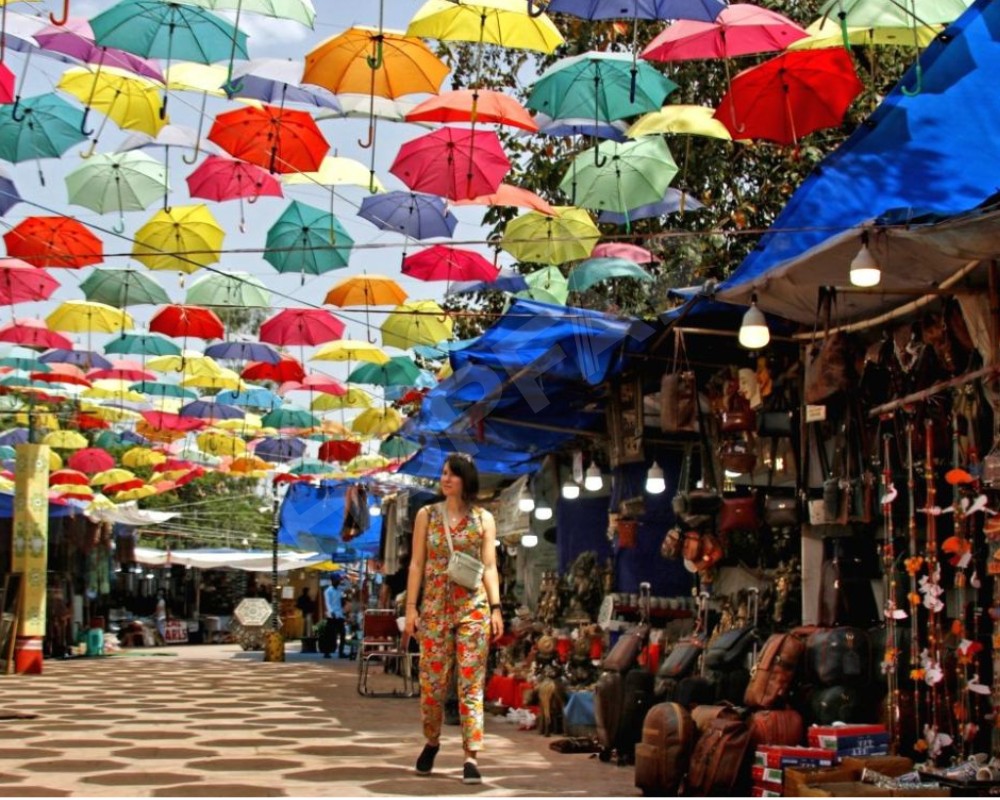
Dilli Haat is like an enchanting village fair where you can also shop and eat your heart out. It is spread over 3 locations in Delhi and is managed by the Delhi Tourism and Transportation Development Corporation (DTTDC). Here, all kind of hand-made beautiful things can be found: carvings of wood, fabrics, metal crafts, etc.
Dilli Haat is not just a marketplace, it’s also a food lover’s paradise. You can taste dishes from various parts of India, ranging from momos to hot chicken. And not to forget the cultural shows that take place every day in the amphitheater!
Dilli Haat was established in 1994 and occupies 6 acres land. It is a bustling place with 62 stalls whose craftsmen come and go within two weeks. It is a simple and lively place where creativity and culture are in synergy.
- Rashtrapati Bhavan
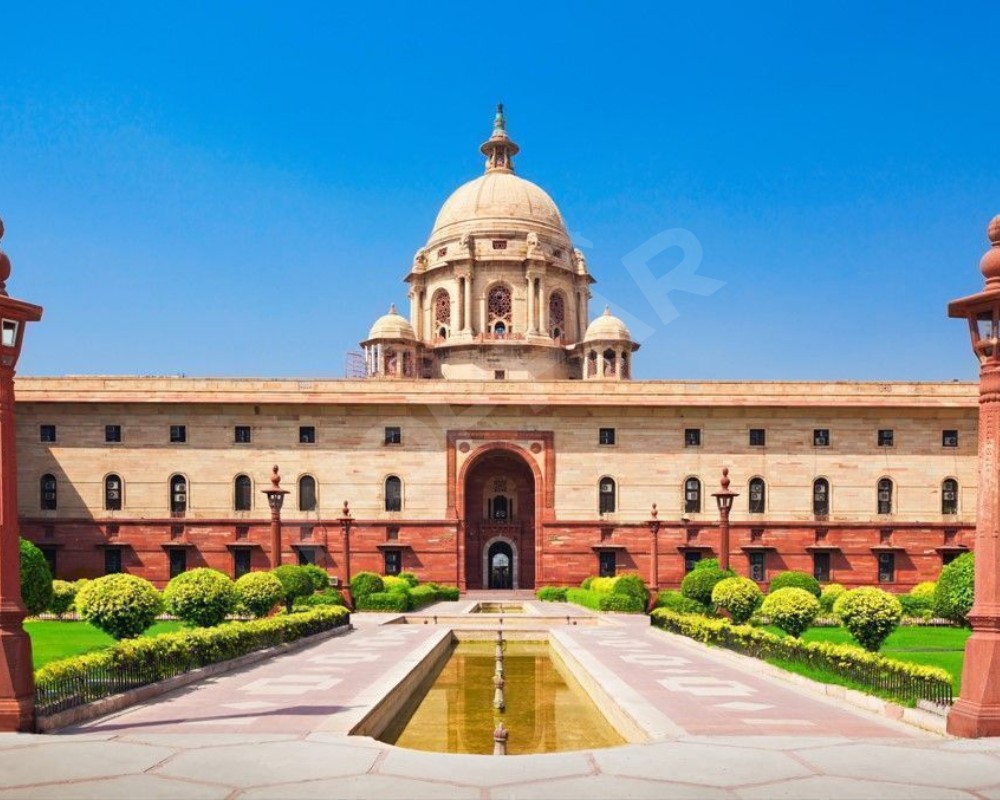
At the western end of Rajpath, in New Delhi, is located the Rashtrapati Bhavan, the official residence of India’s President. It was formerly the Viceregal House, but is now the biggest head of state residence in the world, covering 330 acres and occupying 5 acres with a main building having 340 rooms. It came into being with the help of the architects Edward Lutyens and Herbert Baker, the work was completed in 1929. President Kovind has been living there since July 2017.
The Rashtrapati Bhavan can be visited in three zones. The first encompasses the Main Building and Central Lawn with its architecture. The second is the Rashtrapati Bhawan Museum complex with a number of buildings to visit. At last, Part three features the fantastic Mughal Gardens, a verdant garden of greenery. A visit to the Rashtrapati Bhavan will let you see the grandeur of it in the flesh.
- Chandni Chowk

The famous Chandni Chowk marketplace in Old Delhi is a vibrant center of trade and culture that is centuries old. Built by Emperor Shah Jahan in the 17th century, it is situated across from the famous Red Fort and provides a view of the imposing Fatehpuri Mosque nearby. This lively wholesale market is known for its historical significance and wide-ranging assortment of goods.
Being described as “a shopper’s paradise,” Chandni Chowk is a unique bazaar with the finest range of products like clothes, electronics, jewelry, etc. Its narrow streets, which used to be lit up by the moonlit canal, now are full of activity of traders and customers fighting their way out of the maze of business. The bargain seekers and the retailers have their fair share of opportunities within the lively street.
Apart from its commercial character, Chandni Chowk is known for its scrumptious street food and gastronomical offerings. There is an energy that permeates the place which reflects the soul of the city of Delhi, with its sights, sounds, and smells. It is said “Chandni Chowk – Delhi.”




